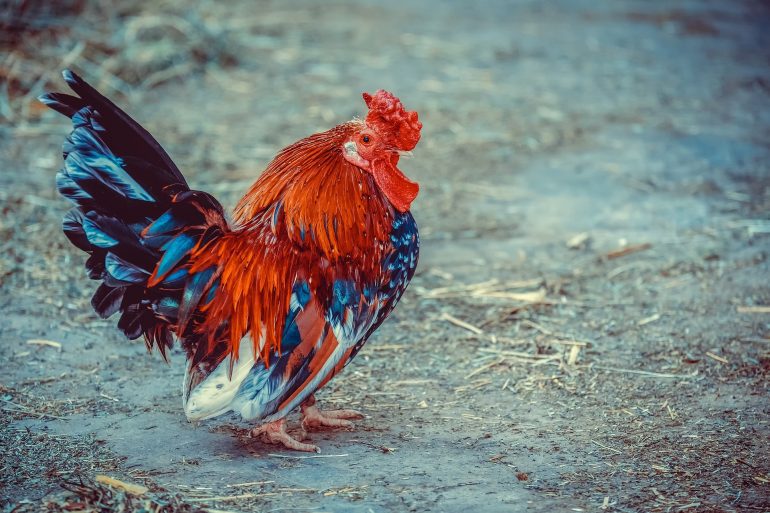- Aranyak Goswami, a bioinformatics specialist, joins Arkansas Agricultural Experiment Station, bringing expertise in AI and machine learning.
- Collaboration with Animal Science and Poultry Science departments aims to enhance animal health and productivity.
- Focus on genome sequencing to decipher genetic patterns and optimize meat production.
- Goswami’s role extends to teaching AI courses and advancing the Center for Agricultural Data Analytics.
- Potential growth in the bioinformatics field highlighted promising transformative changes in animal science research.
Main AI News:
In the realm of animal science, the fusion of supercomputers and artificial intelligence may seem unconventional, yet they stand as pivotal tools in the emerging field of bioinformatics, facilitating advancements in animal health and productivity.
Aranyak Goswami, a bioinformatics specialist, transitions from his prior endeavors in human-focused medical research at esteemed institutions like Yale University and Stanford University to assume the role of assistant professor at the Arkansas Agricultural Experiment Station. Tasked with fortifying the research endeavors within the U of A System Division of Agriculture, Goswami’s collaboration spans three diverse departments.
Michael Looper, head of the Animal Science Department, emphasizes the significance of artificial intelligence and machine learning in animal and poultry production. Goswami’s expertise aligns seamlessly with ongoing research pursuits, enhancing programs centered on animal health, genetics, and overall well-being.
Analogous to assembling a complex jigsaw puzzle, Goswami employs sophisticated data analysis techniques to decipher information derived from intricate research endeavors such as genetic sequencing. This burgeoning field of bioinformatics intertwines biological data with storage, distribution, and analysis methodologies, bolstering various scientific disciplines.
The synergy between computational biology and animal science, as highlighted by Looper, promises substantial benefits for producers not only within Arkansas but also beyond its borders. Collaborative efforts with Jiangchao Zhao, a distinguished professor of animal science, underscore Goswami’s commitment to exploring animal microbiomes and their multifaceted roles in regulating vital functions like digestion, reproduction, and infection resistance.
Goswami’s research trajectory pivots around genome sequencing, unraveling genetic intricacies to discern diverse gene expression patterns. By scrutinizing biological pathways and metabolic interactions, his analyses strive to enhance animal health and optimize meat productivity, with a particular emphasis on gut health.
Looking ahead, Goswami envisages leveraging his expertise in human health research and machine learning to catalyze advancements in animal well-being. He envisions a dynamic landscape where computational biologists play a pivotal role in unraveling the complexities of animal genomics and devising innovative methodologies to address emerging challenges.
Machine Learning Revolutionizes Agriculture
Within the purview of the Dale Bumpers College of Agricultural, Food, and Life Sciences, Goswami is poised to impart knowledge through a spectrum of courses. Concurrently, his research endeavors within the Animal Science and Poultry Science departments, alongside the Center for Agricultural Data Analytics, promise groundbreaking insights into poultry food safety, disease prevention, and beyond.
David Caldwell, leading the Poultry Science Department and steering the Center of Excellence for Poultry Science, anticipates substantial dividends from Goswami’s expertise in bioinformatics, particularly in high-throughput sequencing and omics data analysis. Through collaborative efforts, the convergence of advanced analytics and agricultural sciences heralds a new era of innovation.
Goswami’s mission extends beyond academia; he aspires to foster the development of the Center for Agricultural Data Analytics into a global hub for machine learning and mathematical modeling in agriculture. By nurturing a cohort of students versed in artificial intelligence, he aims to cultivate a cadre of future leaders poised to tackle agricultural challenges through data-driven insights.
Pioneering the Future of Bioinformatics
Bioinformatics, though nascent, holds immense promise for expansion and innovation, asserts Goswami. With a doctoral background in microbial ecology, evolution, and genomics, he brings a wealth of experience garnered from esteemed institutions like the Indian Institute of Chemical Biology, Yale University, and Stanford University.
Goswami’s trajectory underscores the transformative potential of interdisciplinary collaborations, epitomizing the convergence of biological sciences, computational methodologies, and mathematical modeling. As he embarks on his tenure at the Arkansas Agricultural Experiment Station, Goswami envisions catalyzing transformative changes within the broader scientific landscape, propelled by the inexorable march of innovation and collaboration.
Conclusion:
The integration of artificial intelligence and machine learning into Arkansas’s animal science research marks a significant paradigm shift, promising transformative advancements in animal health, genetics, and productivity. This convergence not only enhances research capabilities but also fosters a new era of innovation in agricultural sciences, positioning Arkansas as a hub for cutting-edge research and technological innovation in the field of animal science.

